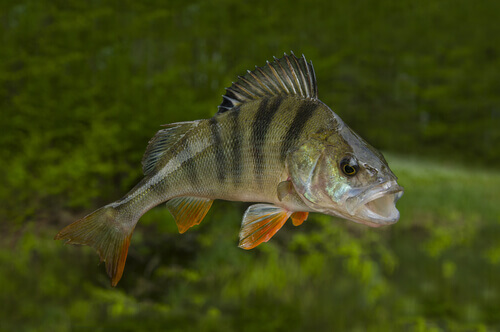5 Animals that Live in the Nile

This is one of the most important freshwater reserves on the planet, which irrigates no fewer than 10 countries in East Africa. Across its more than 6,800 kilometers (4,225 mi) in length, the Nile is home to thousands of species. In this article we’ll tell you more about some animals that live in the Nile.
Animals that live in the Nile
Between the Mediterranean Sea and Lake Victoria, the longest river in the world gives life to millions of people and other living beings. Related to the Egyptian civilization, and divided into different low and high courses, it allows the subsistence of many species. Here we bring you some of the animals that live in the Nile.
1. Perch
The Nile perch —in the image at the beginning of this article— is one of the many fish that we can find in this river, mainly when it passes through Ethiopia. It’s characterized by its great size: 2 meters (7 ft) long and 200 kilograms (441 lb) in weight.
It’s the most invasive exotic species on the planet. Ever since its introduction to Lake Victoria, it’s caused the disappearance of 200 native fish. A documentary film, called “Darwin’s Nightmare”, has even been made about this problem. This film narrates the before and after of the arrival of the perch to the Nile and its tributaries.
2. Crocodile: one of the ferocious animals that live in the Nile
The crocodile is the most “famous” inhabitant of the basin, but it’s not found across the entire course of the river. Due to the construction of a dam in the city of Aswan, Egypt, it only inhabits the southern part of the river. The Nile crocodile is one of the three species that inhabit Africa and can reach 6 meters (20 ft) in length.

The color of its body —covered with scales— is bright or dark olive green, with a pale yellow belly. It spends its days either in the waters of the river or on the sand of the shore. It feeds on the animals that come to drink: it drags them along and drowns them. Also, as it doesn’t chew, the crocodile tears off pieces of meat from its prey by twisting its body.
3. African softshell turtle
This species of chelonian catches our eye due to its soft shell, as its name suggests. It lives in the Nile, but its habitat extends to the Middle East, Turkey, and a large part of Africa, especially lakes, rivers, and freshwater lagoons. In exceptional cases, it can inhabit the coasts and brackish waters. It spends most of its time submerged and comes to the surface to sunbathe.

The African softshell turtle is, however, in danger of extinction. It measures almost 1 meter (3 ft) in length, and weighs about 40 kilos (88 lb). The males are smaller than the females, even if their tails are longer and more robust. Also, their body is brown and oval-shaped. They feed on amphibians, fish, crustaceans, plants, and seeds. Finally, females lay up to 100 eggs each season.
4.Tsetse fly
Glossina is a genus of African blood-feeding insects —hematophages— popularly called tsetse flies. These flies are responsible for transmitting several diseases among people, including malaria.

As for its body, it’s quite similar to that of the common fly. However, it differs in some ways that are easy to distinguish. It folds its wings completely when it’s at rest and has a tube that “comes out” from the bottom of its head.
5. Hippopotamus
This large herbivorous mammal is another of the animals that live in the Nile, as well as in all of sub-Saharan Africa. It stays most of its life in freshwater and forms groups of up to 100 members led by rather territorial males, although this isn’t the case when they’re on land.

The Nile hippopotamus is the third-largest land animal (after the elephant and the rhinoceros) weighing up to 3 tons (6,614 lb). Even though its body is quite robust, it can run at high speeds over short distances.
All cited sources were thoroughly reviewed by our team to ensure their quality, reliability, currency, and validity. The bibliography of this article was considered reliable and of academic or scientific accuracy.
- FAO. (2009). Oreochromis niloticus. In Cultured aquatic species fact sheets. Text by Rakocy, J. E. Edited and compiled by Valerio Crespi and Michael New. Recuperado el 7 de mayo de 2022, disponible en: https://www.fao.org/fishery/docs/DOCUMENT/aquaculture/CulturedSpecies/file/es/es_niletilapia.htm
- Gobierno de México (2016) Método de Evaluación Rápida de Invasividad (MERI) para especies exóticas en México Varanus niloticus Linnaeus, 1758. Recuperado el 7 de mayo de 2022, disponible en: https://www.gob.mx/cms/uploads/attachment/file/222311/Varanus_niloticus_A.pdf